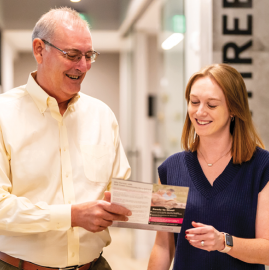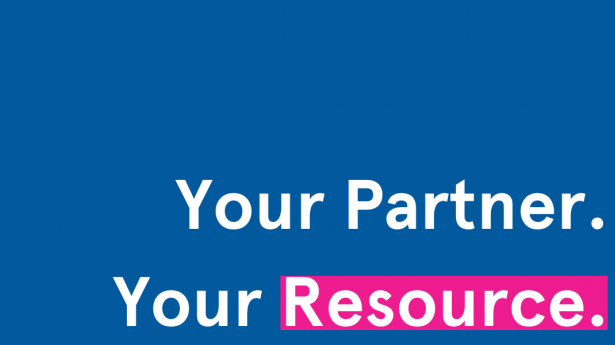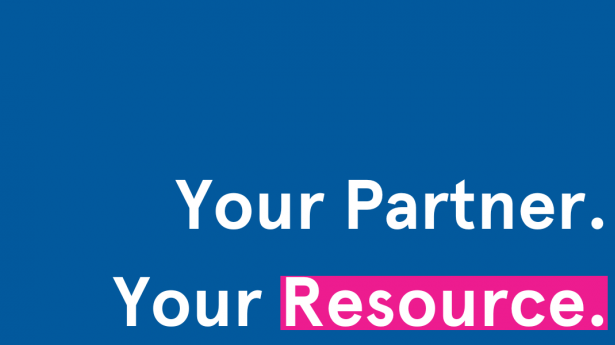
April 2025 Newsletter
A Note from Joe
Put Us on Speed Dial!

The Gulf Coast team is honored to work with attorneys, CPAs, and financial advisors as they help their clients achieve their charitable giving goals. If you’re not currently working with us, please put us on speed dial – we want to be your first call when the agenda turns to philanthropy!
As part of our service to you and other advisors, Gulf Coast is committed to letting you know about trends and developments that may impact your clients’ charitable giving strategies. See below on three topics that are frequently popping up in our conversations with both donors and advisors.
Your April Content
As part of our service to you and other advisors, Gulf Coast is committed to letting you know about trends and developments that may impact your clients’ charitable giving strategies. To that end, here are three topics that are popping up frequently in our conversations with both donors and advisors:
- Trust is at the foundation of your client relationships, and the team at Gulf Coast feels the same way about our relationship with you, your clients, our region’s nonprofits, and the community we serve.
- Deciding whether a private foundation, supporting organization, or a donor-advised fund is the best vehicle for your client can be challenging, especially if the client walks in the door with preconceived notions. A donor-advised fund or a supporting organization may be more flexible and effective than you assume and often is the ideal tool to achieve clients’ tax and charitable giving goals.
- You may not run across charitable gift annuities (CGAs) very often, but when you do, it’s good to know the basics. We’ve put together a few quick pointers as a refresher course on how a CGA works and when it might be a good fit.
Please reach out anytime you’re dealing with a client matter related to charitable giving. We can almost always provide a solution, and if we can’t, we will recommend the best next steps for you and your client.

WEIGHING YOUR CLIENTS' OPTIONS:
Private Foundations vs. Supporting Organizations vs. Donor-Advised Funds
When you’re working on the charitable components of a client’s estate or financial plan, one of the first areas you’ll likely explore is the structure. Certainly you are familiar with both private foundations and donor-advised funds as useful charitable giving tools. However, you may not be quite as familiar with supporting organizations. Before you jump into one or the other for a particular client, it’s important to review the similarities and differences between the three so that you can best achieve your client’s goals.
To help you evaluate a client’s options, here are three common myths about the differences between private foundations, supporting organizations, and donor-advised funds.
Myth #1: Donor-advised funds are all the same and only private foundations can be customized. Private foundations will always differ from donor-advised funds in important ways, not only because of their status as separate legal entities and the deductibility rules for gifts to these entities, but also because of the opportunities to customize governance. But it is a mistake to assume that a donor-advised fund is a cookie-cutter vehicle. Indeed, “donor-advised fund” is simply a term used to describe the structure of a fund and its relationship with a sponsoring organization such as Gulf Coast. The donor-advised fund vehicle itself is extremely flexible. Here’s why:
- Donor-advised funds are popular because they allow your client to make a tax-deductible transfer of cash or marketable securities that is immediately eligible for a charitable deduction. Then, your client can recommend gifts to favorite charities from the fund when the time is right.
- A donor-advised fund at Gulf Coast is frequently a more attractive choice than a donor-advised fund offered through a financial institution. That’s because at Gulf Coast, your client is part of a community of giving and has opportunities to collaborate with other donors who share similar interests. Plus, Gulf Coast is itself local and is deeply knowledgeable about the needs of our region and the nonprofits meeting those needs.
- Gulf Coast can work with you and your client to build a charitable giving plan that extends for multiple future generations. That is because the team at Gulf Coast supports your clients in strategic grant making, family philanthropy, and opportunities to learn about local issues and nonprofits making a difference.
Myth #2: Deciding whether to establish a donor-advised fund, supporting organization or a private foundation mostly depends on size. The size of a donor-advised fund, supporting organization and private foundation have no ceiling as far as total assets. However, it is common for private foundations and supporting organizations to be larger in size, although, in many cases a donor-advised can serve as the best option. The United States’ largest private foundations are valued well into the billions of dollars. Information about private foundations, ironically, is not so private. The Internal Revenue Service provides public access to private foundations’ Form 990 tax returns, the same with supporting organizations. That is not the case for individual donor-advised funds.
Similarly, donor-advised funds are not subject to an upper limit. Although information on the asset size of individual donor-advised funds is not publicly available, anecdotal information indicates that some donor-advised funds' assets may total in the billions of dollars.
Indeed, a donor-advised fund of any size can be an effective alternative to a private foundation, thanks to fewer expenses to establish and maintain, maximum tax benefits (higher deductibility limitations and fair market valuation for contributing hard-to-value assets), no excise taxes, and confidentiality (including the ability to grant anonymously to charities). Like donor-advised funds, supporting organizations share most of the common traits. One major difference is the holding period in which each can retain certain assets before liquidation. Donor-advised funds are limited to five years for certain types of gifts, whereas a supporting organization has no such requirement. Therefore, a supporting organization could hold real estate, privately held stock, royalty interest, etc.
The net-net here is that the decision of whether to establish a donor-advised fund, supporting organization or a private foundation–or one or more–is much less a function of size than it is other factors that are tied more closely to the objectives a client is trying to achieve.
Myth #3: Donor-advised funds, supporting organizations, and private foundations are mutually exclusive. Make sure you’re aware of the benefits of using both a donor-advised fund and a supporting organization/private foundation to accomplish clients’ charitable goals. For example:
- Donor-advised funds can help meet the need for anonymity in certain grants, which is typically difficult using a private foundation/supporting organization on its own.
- A donor-advised fund and a supporting organization can receive a client’s gifts of highly-appreciated, nonmarketable assets such as closely-held stock and real estate, and benefit from favorable tax deduction rules not always available for gifts to a private foundation.
- An integrated donor-advised fund and private foundation/supporting organization approach can help a client balance and diversify investment and distribution strategies to ensure that giving to important causes remains steady even in market downturns.
Some private foundations are even considering transferring their assets to a supporting organization or donor-advised fund at Gulf Coast to carry on the foundation’s mission. Terminating a private foundation and consolidating giving through a donor-advised fund/supporting organization is sometimes the best alternative for a client when the day-to-day management and administration of the private foundation has become more time-consuming than expected and is taking time and focus away from nonprofits, the community, and making grants.
Along these lines, some families find that the tax rules related to investments, distributions, and “self-dealing” have become harder to navigate and are perhaps even preventing the family from maximizing tax benefits of charitable giving. Finally, the administrative load of managing a private foundation sometimes becomes overwhelming, especially if the family members who handled these functions initially have retired, passed away, or simply become busy with other projects.
The bottom line here is that we encourage you to reach out to the team at Gulf Coast anytime you are evaluating how to structure a charitable giving plan to achieve both your client’s charitable goals and financial goals. Our team is here to help. In many cases, Gulf Coast’s tools and services are a great fit for your client’s needs. If not, we will point you in the right direction.

REFRESHER COURSE:
Charitable Gift Annuities
Several advisors have shared with us recently that they’re fielding more questions about charitable gift annuities(CGAs). It’s quite possible that CGAs are landing on clients’ radars these days for a couple of reasons:
A $54,000 opportunity. Word is finally getting out about the availability of a one-time Qualified Charitable Distribution transfer via a “split-interest gift” such as a CGA or a charitable remainder trust (CRT) under the “Legacy IRA” provisions enacted a couple of years ago. Adjusted for inflation, the ceiling for 2025 is $54,000. Because the law effectively mandates that the CGA or CRT be created solely for the purpose of receiving a QCD, your clients may gravitate toward the CGA, which is less complicated than going through the process of creating a relatively small CRT.
Payout rates are still high. Current charitable gift annuity payout rates, as suggested by the American Council on Gift Annuities (ACGA), are generally higher than in previous years. Rates were increased in January 2024 and remain in effect for 2025. With the status of interest rates unpredictable as 2026 approaches, some clients may want to take advantage of a CGA this year.
So what do you need to know about how and why a charitable gift annuity can be an effective planning tool for some clients? Here are the basics:
- Through a charitable gift annuity, your client makes a transfer of assets to a charitable organization and in return receives a lifetime income stream and a partial tax deduction.
- When the client dies, the remaining funds are retained by the charity.
- The charitable donation portion of the transaction is calculated based on Internal Revenue Service rules for determining the amount of the contribution that is in excess of the present value of the annuity(these are the rates that are relatively high right now).
- Your client can fund a charitable gift annuity with a variety of assets, including marketable securities and cash.
- Actuarial calculations are used to establish the payout amounts, paid in equal installment payments that are considered a partial tax-free return of the client’s original gift.
- Generally a large residual flows to the charity after the client’s death.
- The charity’s own assets, not just the donated assets themselves, back the annuity payouts. Because of this dynamic, charitable gift annuities are regulated by most states to ensure that the charity has enough reserves to meet obligations.
Please reach out to the Gulf Coast Team when a client asks about charitable gift annuities or any other type of charitable gift. Keeping up with the rules and regulations for charitable gifts of all kinds is one of the many ways our team is here to help you serve your charitable clients. We’re honored to be your first call on all things philanthropy!
|
Creative Solutions Do you have older clients facing capital gains upon maturity of their commercial annuity? Do you have a client that has maxed out all of their qualified retirement instruments seeking additional retirement income and tax deductions? Do you have clients with highly appreciated portfolios seeking to diversify, but reluctant given the long-term capital gains? Do you have clients fearful of the current investment landscape seeking guaranteed rates of return and interested in supporting their favorite charitable causes? These are just a few of the many ways, a charitable gift annuity can be used as a planning strategy. Please call us for additional planning opportunities or to request a proposal to present to your clients. |

TRUST MATTERS:
Your Go-To Resource for Community Impact
As attorneys, CPAs, and financial advisors, you know very well that trust is at the foundation of your relationships with clients. Your clients are seeking a similar level of trust with the people and organizations that are helping carry out their philanthropic wishes.
As you work with your charitable clients, keep in mind, Gulf Coast can help bolster clients’ trust in their favorite charities. Here’s how:
Trustworthy information about particular charities. Gulf Coast is a valuable source for objective, timely information about specific charities and the impact of particular programs. By working with Gulf Coast, your clients can leverage a transparent and trustworthy avenue for learning about how best to make a difference for their favorite causes.
Wide-ranging expertise about community needs. At its core, Gulf Coast is committed to achieving impact. This means that our team keeps a finger on the pulse of local needs, whether related to social services, health care, education, the environment, the arts, community development, or any other community priority. With a deep understanding about community needs, the Gulf Coast Team can be an excellent sounding board for your clients who want to learn which charities are addressing each need and how those charities are measuring results.
Broad set of tools for structuring charitable gifts. Gulf Coast can help establish a tax-efficient structure to achieve each client’s goals for community impact. Available vehicles include not only donor-advised funds, but also other types of funds such as designated funds to support specific charities and field-of-interest funds to address particular causes, as well as multi-generational funds to involve clients’ children and grandchildren. Gulf Coast offers your clients a flexible and effective way to manage charitable giving by simplifying their giving processes and maximizing potential tax benefits.
As always, we want to be your first call! Please reach out to the Gulf Coast Team anytime the topic of charitable giving comes up during a client conversation.
Your Resource.
As you serve your philanthropic clients, we strive to be your resource and sounding board. Understanding the charitable side of the equation allows us to serve as a secondary source for you as you manage the primary relationship with your clients.
Connect with us anytime! It’s our pleasure to work with you in partnership as you help your clients achieve their charitable giving goals for this year and many years beyond tomorrow.



